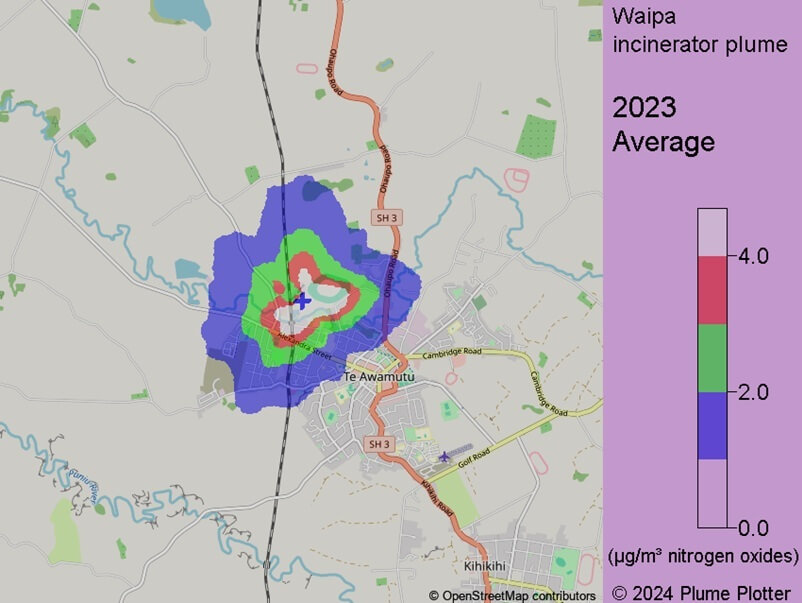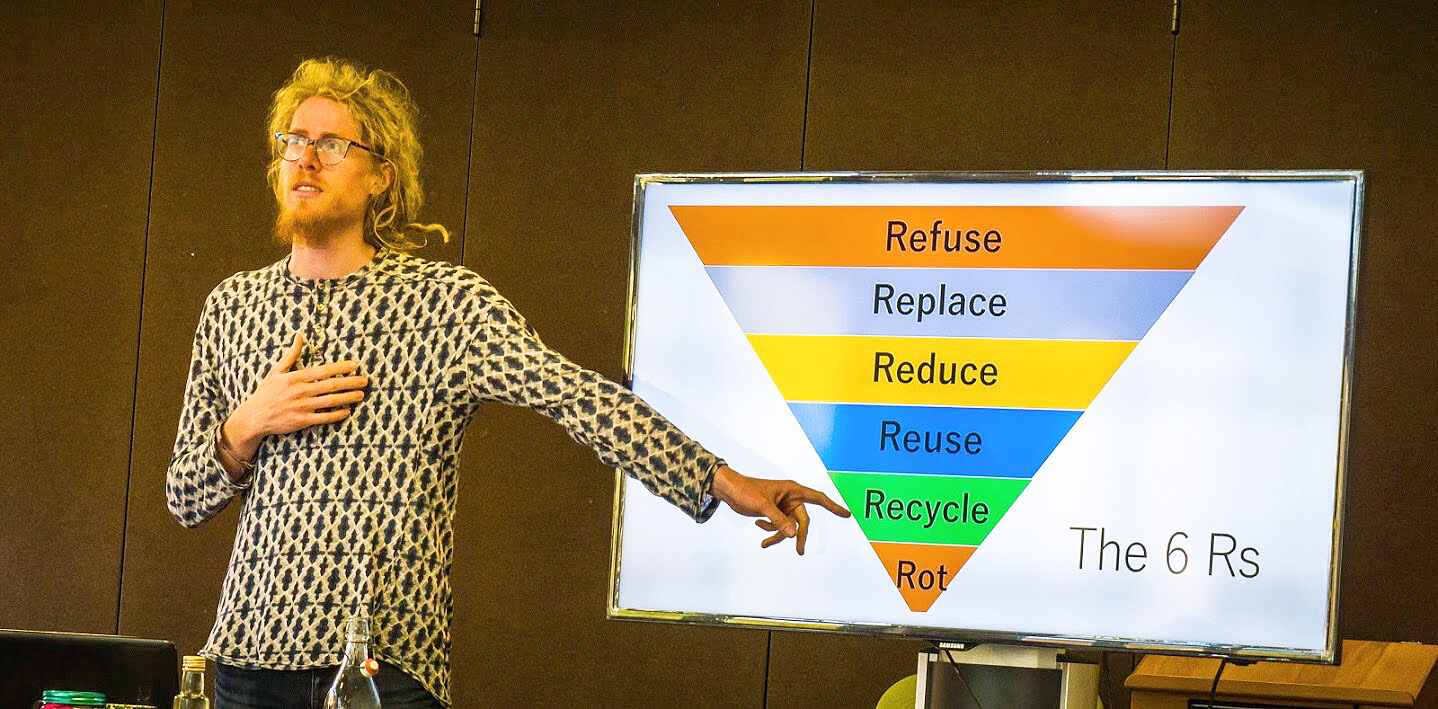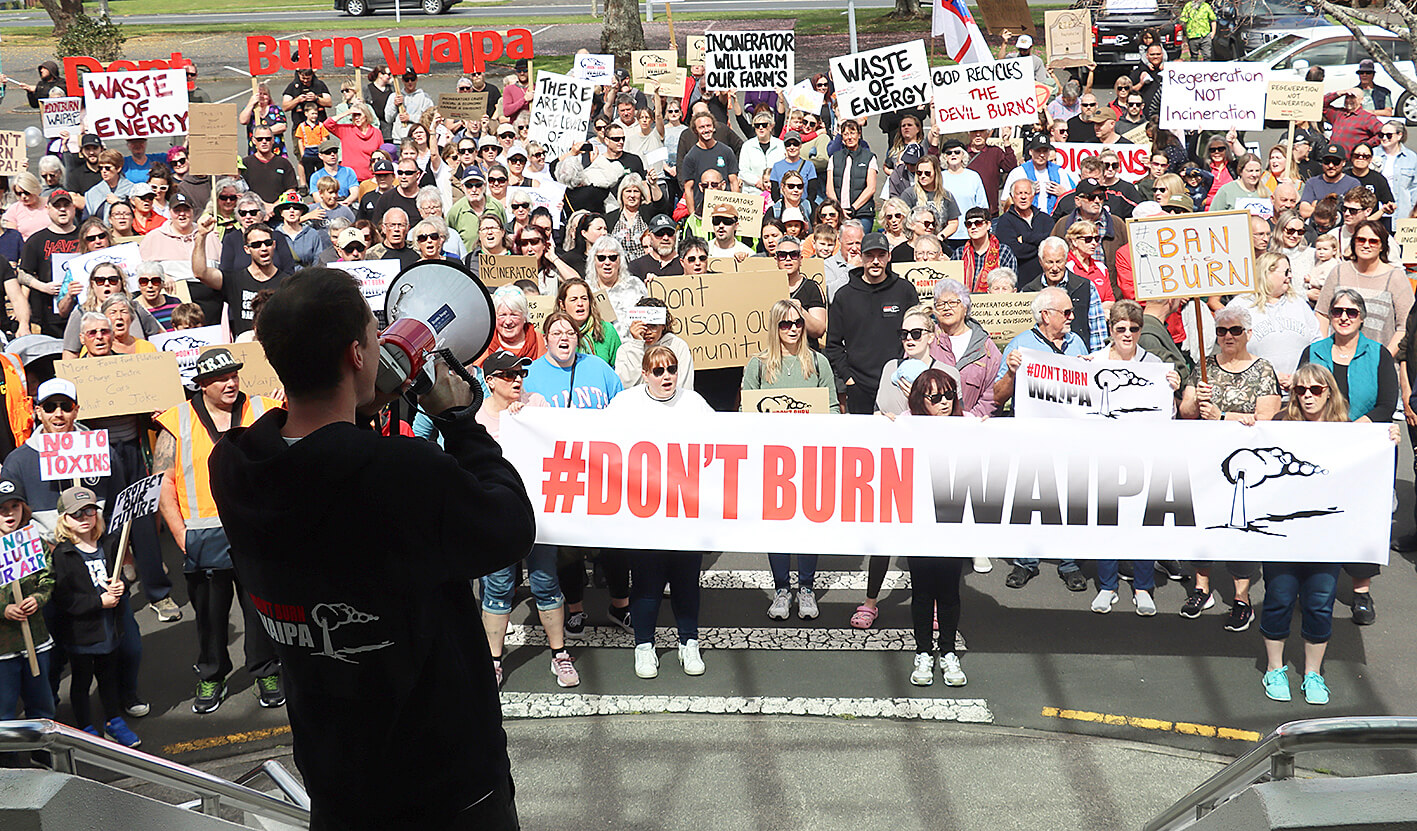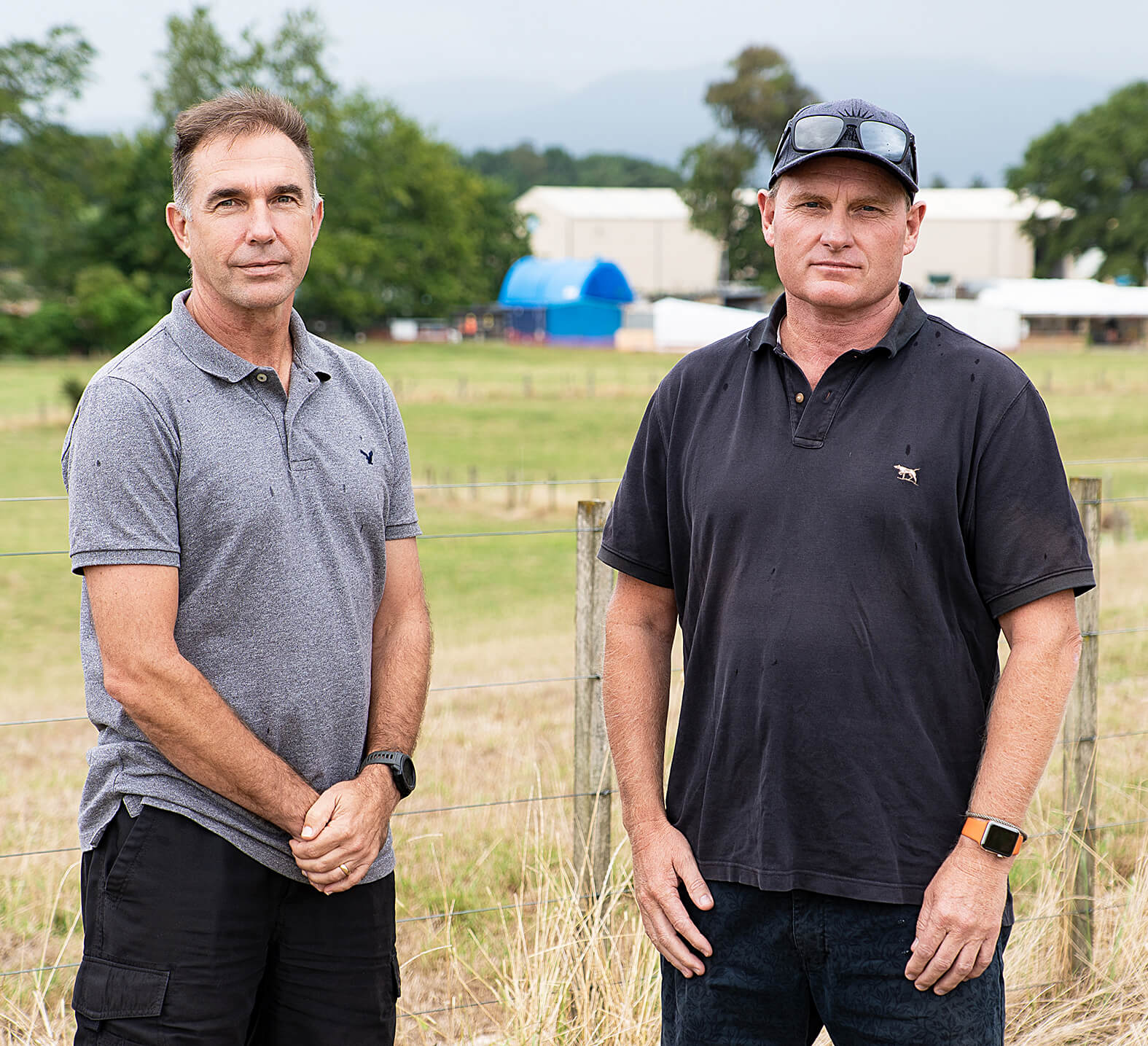Paewira Energy-from-Waste project director Adam Fletcher says he is not surprised or concerned by a computer model showing the enormous extent of the proposed Te Awamutu plant’s plume.

The image provided via Plume Plotter shows how the app believed oxides of nitrogen would have spread from the incinerator had it operated in Te Awamutu 2023 – ranging from 3-4 micrograms in red, two to three in green and up to two in blue. The concentration of an air pollutant is given in micrograms (one-millionth of a gram) per cubic meter air or µg/m3.
Lobby group Don’t Burn Waipā released what it called “shocking imagery” showing the proposed incinerator’s plume covered the town after UK website Plume Plotter processed data from Global Contracting Solutions’ application and weather information.
The website produces an hourly snapshot of the extent of the modelled incinerator plume from Racecourse Road and a composite plot of the average extent over a year.
Don’t Burn Waipā spokesman Eoin Fitzpatrick said the group was planning on presenting the data to the Board of Inquiry which will decide the application next year.

The 6 Rs of recycling
“The extent of the plume is enormous, and it extends over residential land,” Fitzpatrick said.
“Waste incinerators are usually sited in industrial areas not residential neighbourhoods surrounded by schools like this proposal.”
“The negative health and environmental impacts of this will be huge. New Zealand already has very poor air quality, and thousands of premature deaths from air pollution every single year Fitzpatrick said.
“This tool shows just exactly what our community is facing. It cannot be overstated what a bad proposal this is.”

Protestors Don’t Burn Waipa outside council building.
Waipā District Council and the Te Awamutu-Kihikihi Community Board are objecting to the plan and Waikato Regional Council is completing a submission for the board.
Paewira Energy-from-Waste project director Adam Fletcher said the company was pleased people were engaging with the science as it is a complex issue.
“This demonstrates the difference between modelled information prepared for a consent application and actual results. From this people will see that even with the modelled results being well below permitted standards, the actual results from our new plant, which operates in essentially the same way as the Rockingham plant, will be even better than our predictions.”

Project director Adam Fletcher and CEO Roger Wilson – Photo Benjamin Wilson








